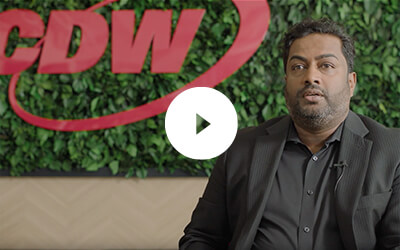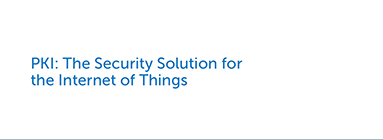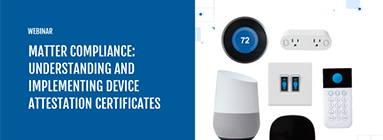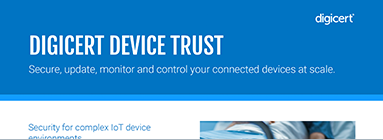-
Solutions
Back
Digital Trust for:
Enterprise IT, PKI & Identity
Code & Software
Documents & Signing
IoT & Connected Devices
Manage PKI and Certificate risk in one place
Manage PKI and Certificate risk in one place
The smarter way to manage certificate lifecycles
Continuous Signing for CI/CD & DevOps
Secure, flexible and global signing
Trusted from silicon to in-the-field
Device security without compromise
Accelerate secure app development
Streamlined Certificate
Management
and Automation:
Delivering At-Scale Uptime
and Availability
2022 Edition of the TLS/SSL Best Practices Guide
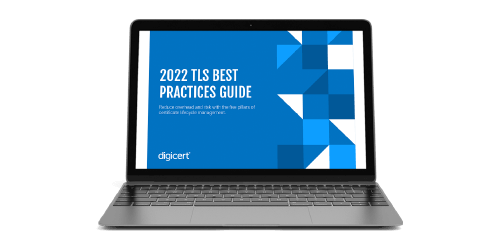
2022 Edition of the TLS/SSL Best Practices Guide


How to establish a signing policy DevOps will actually adopt

Global perspective on managing document signing and regulations

Secure, update, monitor and control connected devices at scale

Secure, update, monitor and control connected devices at scale

Secure, update, monitor and control connected devices at scale

Secure, update, monitor and control connected devices at scale
DOWNLOAD NOW -
Buy
BackWildcard DomainBUY
Find the right TLS/SSL Certificate to secure your website
eIDAS-compliant transaction and website document security solutions
-
Insights
Back
Digital Trust for the Real World
Explore these pages to discover how DigiCert is helping organizations establish, manage and extend digital trust to solve real-world problems.
Ponemon Institute Report
See what our global post-quantum study uncovered about where the world stands in the race to prepare for quantum computing.
LEARN MORE >
-
Partners
Back
-
Support
Back
CONTACT OUR SUPPORT TEAM
- Americas
- 1.866.893.6565 (Toll-Free U.S. and Canada)
- 1.801.770.1701 (Sales)
- 1.801.701.9601 (Spanish)
- 1.800.579.2848 (Enterprise only)
- 1.801.769.0749 (Enterprise only)
- Europe, Middle East Africa
- +44.203.788.7741
- Asia Pacific, Japan
- 61.3.9674.5500
- Americas
- Contact us
- Language
- DigiCert IoT Trust Manager
- Smart City IoT

DigiCert® IoT Trust Manager for Smart Cities
Digital trust
for smart cities
Maximize smart grid efficiency and protect the
real-time data shared between meters, sensors
and systems with a platform for IoT security.
A city besieged
In December of 2019, cybercriminals held four U.S. cities to ransom. The hackers used malware to seize computers, telephones, email and internet servers, and important files. One of the cities paid $140,000 in cryptocurrency to restore control. These kinds of attacks are becoming more frequent as cities become more connected.

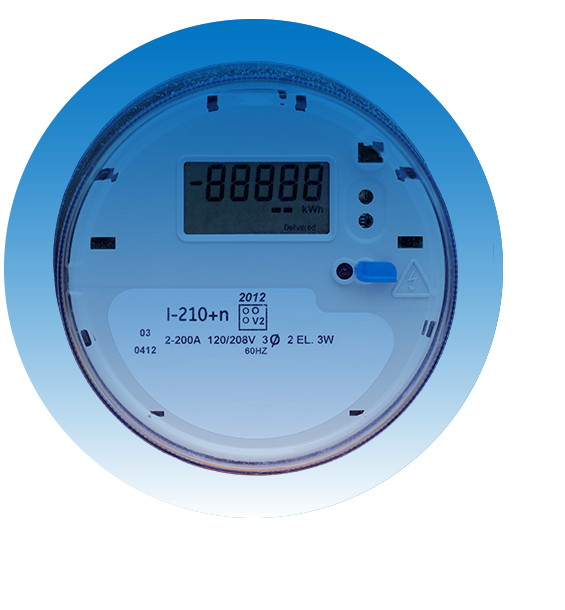
Smart City security that covers every corner
PKI provides mutual authentication, data encryption and system integrity for Smart City IoT, creating safe interactions between systems, devices, applications and users. No matter how you look at it, DigiCert IoT Trust Manager has you covered.
- Authentication
- Certificates for devices validate identities to ensure only authorized users, messages, or other types of servers have access to the device.
- Encryption
- A certificate creates an encrypted link and allows information to be transmitted privately.
- Integrity
- Certificates make sure there’s no alteration to messages or data transferred between devices.
.gif)
Place citizens at the center of your Smart City strategy
Innovations designed to improve and streamline everyday processes have often left out the people on the other end of the experience. With DigiCert IoT Trust Manager, Smart City devices are secured and continuously monitored, providing the right level of IoT device management to assure citizens their data is used only to improve daily life.
A foundation for digital trust
DigiCert ONE is more than just a platform. It’s a new way of thinking about how you secure and manage everything of value in your organization. From the individual website to the massive enterprise, DigiCert ONE makes security, validation, and identity powerful and easy. No matter the size or use, DigiCert ONE delivers control and simplicity for the highest level of assurance.
Take a look at our other DigiCert ONE managers
DIGICERT® CERTCENTRAL TLS MANAGER
DIGICERT® IOT TRUST MANAGER
DIGICERT® TRUST LIFECYCLE MANAGER
DIGICERT® SOFTWARE TRUST MANAGER
DIGICERT® DOCUMENT TRUST MANAGER
Already using DigiCert ONE? Log in now.
The New Definition of Smart: Secure
Choose from cloud, on-prem or hybrid
An IoT platform for any type of infrastructure configuration, DigiCert IoT Trust Manager is flexible enough to fit your needs.
Add more experts to your team
Our PKI architects can plug in at any stage of IoT security solution deployment, from proof-of-concept to implementation to securing millions of devices.
Deploy & manage in one place
Deploy thousands of certificates in minutes. Save time by automating management tasks using REST API, SCEP or Web Services.
Streamline device identity management
Consolidate, organize and manage identity relationships for people, devices and sensors that put their trust in IoT certificates.
Ensure data reliability & system integrity
Prevent tampering or alteration in transit with IoT connection management that confirms original device configuration settings and signs messages moving between devices.
Trust architecture that’s better by design
DigiCert is built on hyper-convergent infrastructure with the highest level of availability, redundancy and security compliance.
SMART CITY RESOURCES
TALK TO AN EXPERT TO LEARN HOW DIGICERT SOLUTIONS CAN
HELP YOU DELIVER DIGITAL TRUST
-
Company
-
My Account
-
Resources
-
Solutions
-
© 2024 DigiCert, Inc. All rights reserved.
Legal Repository Audits & Certifications Terms of Use Privacy Center Accessibility Cookie Settings


